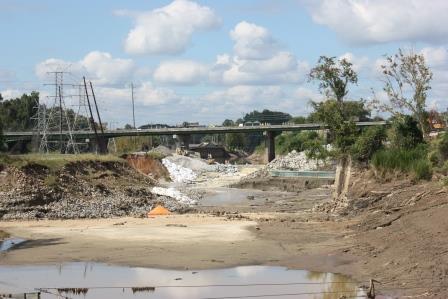At a city managers meeting in January, Forest Acres City Administrator Mark Williams asked for a show of hands of those who were affected by last October's catastrophic flood.
He was surprised by what he saw.
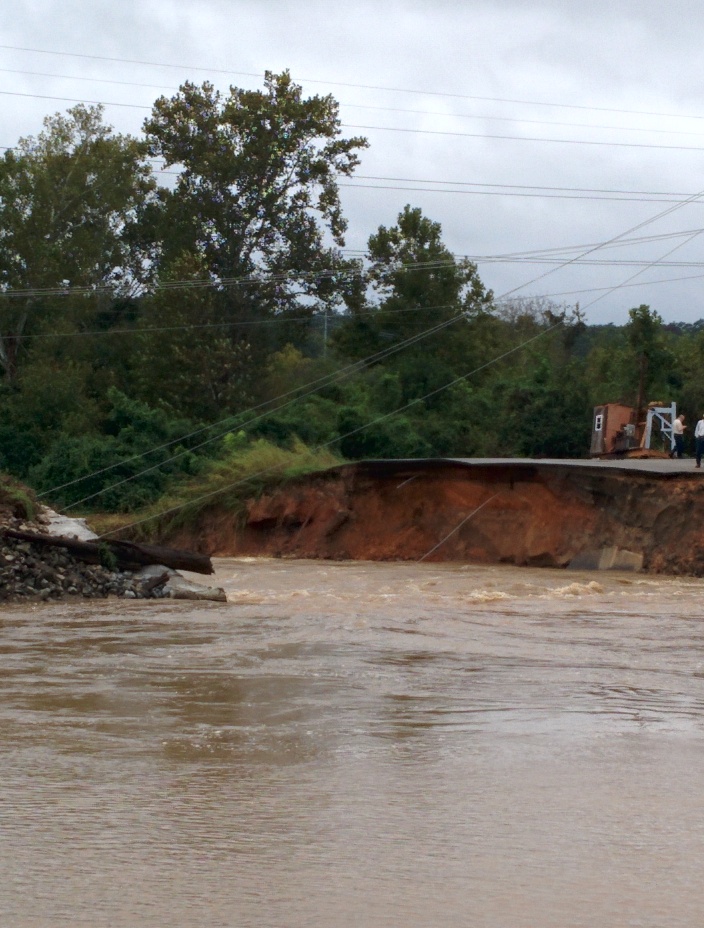
October 2015
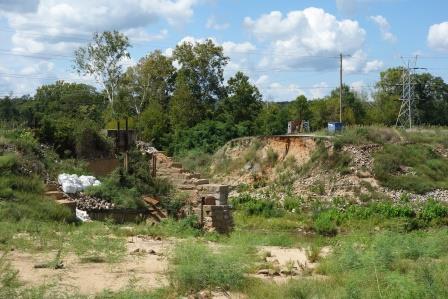
Evidence of the Columbia Canal collapse remain visible a year after the historic 2015 flood.
"Almost every single hand went up in the room," Williams recalled from the meeting in January. "We were so focused on our own localized problems that I don't think we really understood what was happening to the entire state."
The October 2015 rains claimed 19 lives, decimated roadways and brought billions of dollars in damage to the state. A year later, local governments are still putting communities back together.
For the City of Forest Acres, this month brings additional pain.
The city not only marked the flood but also memorialized Greg Alia, the Forest Acres police officer who was fatally shot in the line of duty on September 30. Williams said the severity of the flooding to come was becoming apparent the day after the city buried Officer Alia on October 3.
"We were standing at his funeral in the rain when it started," said Williams. By the next day, city officials knew they were in for a dangerous weather event.
City employees worked overtime, and public safety employees were displaced for months after the police station was flooded.
In neighboring Columbia, four wastewater treatment employees stayed to man the plant after state officials recommended evacuation. The four managed the wastewater that was coursing through the 60 million-gallon-per-day plant. At one point, the volume reached nearly triple that amount, the greatest volume in the plant's history.
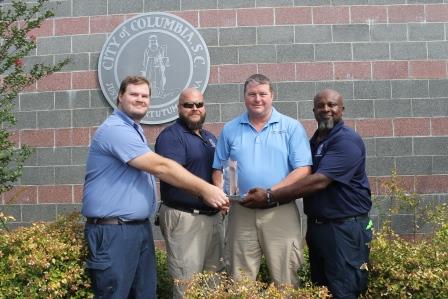
The Water Environment Federation selected the City of Columbia Metro Wastewater Treatment Plant staff, (l-r) Brandon Wilcox, Adrian Martin, Ashley Dove and James Foust, for its national 2016 Water Heroes Award for responding bravely during Columbia’s historic October 2015 flood. Photo/City of Columbia
State environmental officials recommended staff evacuate and shut down the plant due to concerns about the condition of a nearby dike. But the four employees stayed.
"Had the plant been evacuated and shut off, raw sewage would have poured into the river, surrounding neighborhoods and city streets, and drastically impacted Columbia's citizens," stated the city's news release.
In neighboring Forest Acres, flood damaged at least 180 homes, of which Williams estimates at least 15 percent remain displaced.
"One in particular that has plagued me was an elderly retiree who didn't have flood insurance, and her home was a 100 percent loss," said Williams.
Then something unexpected happened. The woman's mortgage company erased her debt.
"It was a blessing for her," said Williams. "I wish everyone had done as well." He said the city continues to help a handful of property owners pursue federal hazard mitigation grants.
"The flooding was clearly magnified by the failure of the dams," said Williams. "The ones that are being restored I am pretty sure will have a lot more scrutiny, better engineering, and hopefully be able to sustain weather like we experienced last year without fear of failure."
In the meantime, debris that entered the city's drainage channels during last year's flood remains.
"I'm concerned there is a potential for debris in another heavy rainfall to float together and form a dam, and start causing more problems," said Williams.
The city is working with the SC Department of Natural Resources and has communicated with Richland County and the City of Columbia to collaborate on cleaning up Gills Creek, one of the hardest hit bodies of water.
Meanwhile, the City of Cayce is still completing $200,000 in repairs to the Thomas Newman boat landing dock and nearly $1.5 million in repairs to the Riverwalk. The Federal Emergency Management Agency will cover 75 percent of the costs.
Bad flood, good data
For the Charleston Water System, the flood presented a valuable test. Despite 700 miles of sewer pipe, there were only seven sanitary sewer overflows.
The system's major pump stations are equipped with a telemetry system, which helps the Charleston Water System keep tabs remotely on what is going on out in the system.
"This proved very helpful during the historic floods in October, and we avoided widespread sanitary sewer overflow," said Matthew Brady, communications manager for the Charleston Water System.
What's more, he said, the data they collected during the flood helped them identify areas of infiltration/inflow, which refers to instances when the system receives extra flows into the system from situations like unusually large volumes of rain water.
The city's sewer system is separate from its stormwater system and wasn't designed to take in that extra water.
"We are targeting the areas we identified for further evaluation and repair," Brady said.
Communicating—now and in the future
In the City of Cayce, at least one key lesson emerged from the flood, according to the city spokesman: It is critical to use relationships with the media to allow for open communication with residents, businesses and schools.
And in the Charleston area, last year's natural disaster is driving officials to embark on a specific public information effort.
"This is also a good opportunity to remind people not to flush things like sanitary wipes. They are harmful to the sewer system and proved to be problematic during this rain event," said Brady.
Wet wipes have been known to harm wastewater systems of all sizes, despite manufacturers' claims that they are flushable. Add an historic flood event, and the problem only worsened.
"The additional flow we received from the rain caused a significant number of wipes to break free, thus clogging our system," said Brady. "As such, we've increased our campaign to remind customers to not flush wipes."
Post-flood: A flexible system
The City of West Columbia is still fixing parts of its Riverwalk Park and making roadway repairs. Plus, a doubling of organic compounds at the Lake Murray Water Treatment Plant led city officials to work with the SC Department of Health and Environmental Control to devise a more versatile disinfection process.
"We saw some elevated levels of disinfection byproducts due to increased organics in our source water resulting from the flood of 2015," said Brian Carter, city administrator of West Columbia. The city performed a study to determine if it was feasible to move the disinfection point later on in the water treatment process and still achieve the required amount of disinfection, while minimizing the formation of disinfection byproducts.
"The study validated our assumptions, and this was submitted to DHEC to get permission to move our disinfection point," said Carter. "What it allowed us to do is take out a lot of the organics before we were disinfecting."
Carter said the importance of foresight proved to be another valuable lesson. For example, it helped to send crews to gather yard debris ahead of the rain event. Days before last year's flood reached its peak, city employees aggressively cleared debris away from storm drains. This early push put the city in a much better position as the rain pounded the state.
As for other lasting changes, Carter said, "There is certainly more discussion on the interconnectivity of our utility systems with our neighbors, the City of Columbia and the City of Cayce."
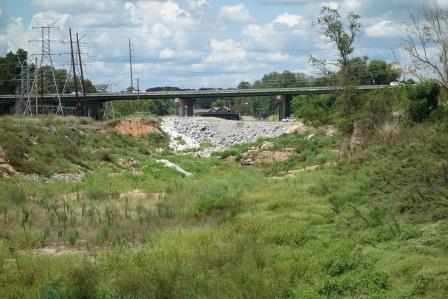
Temporary repairs to the breached Columbia Canal dike remain visible in September 2016.

